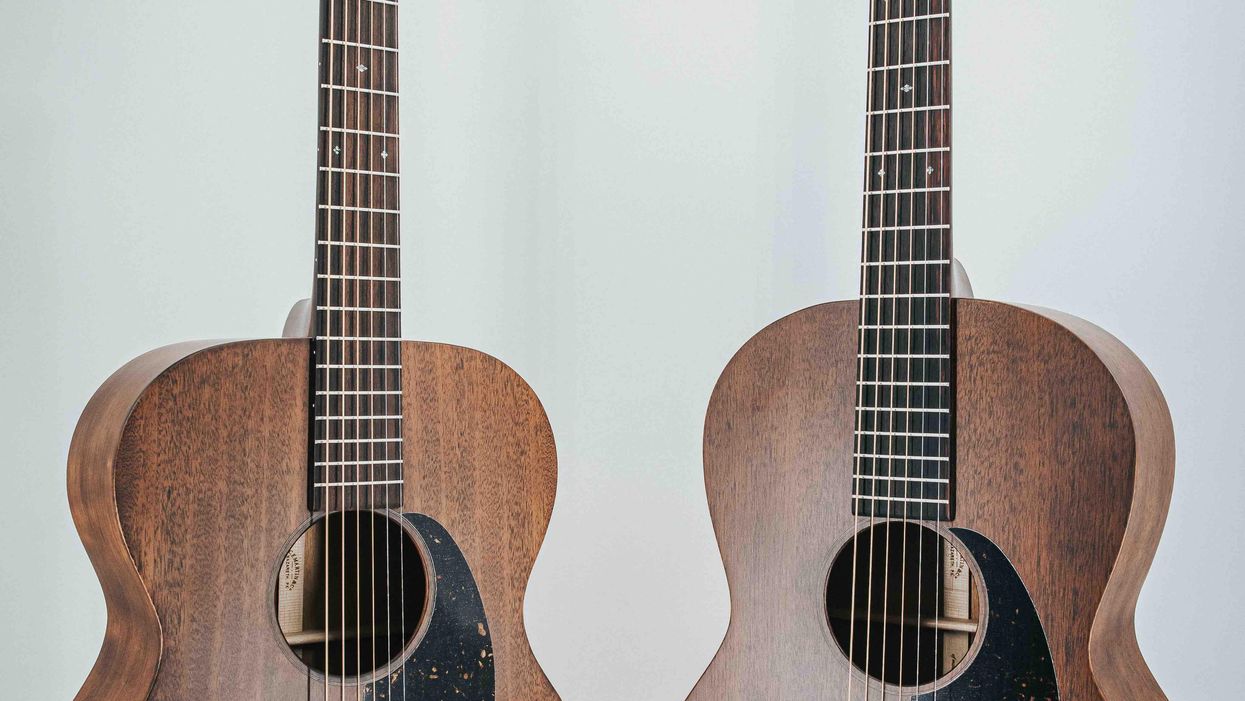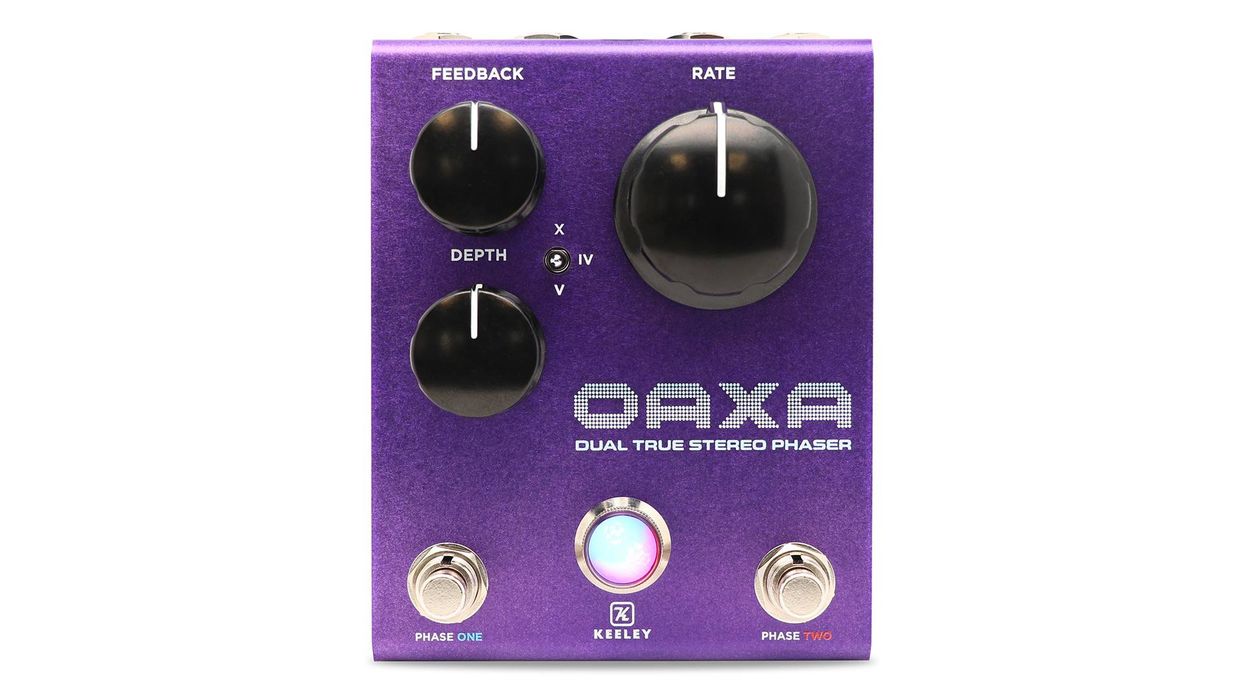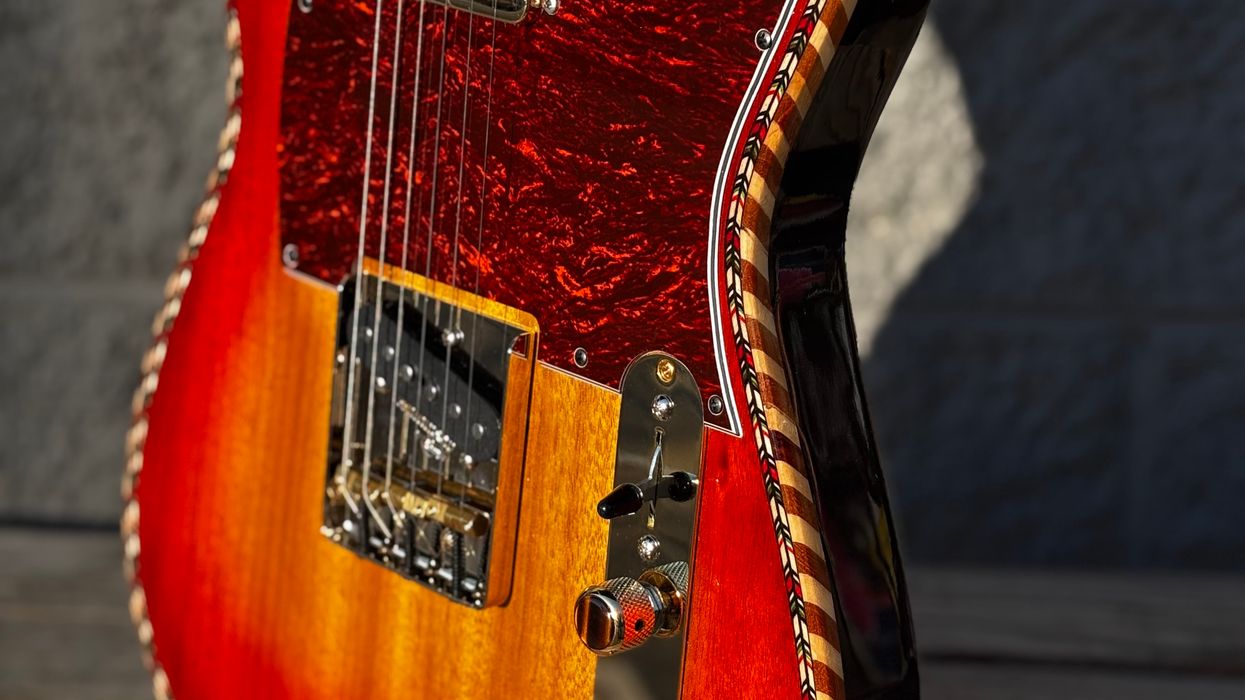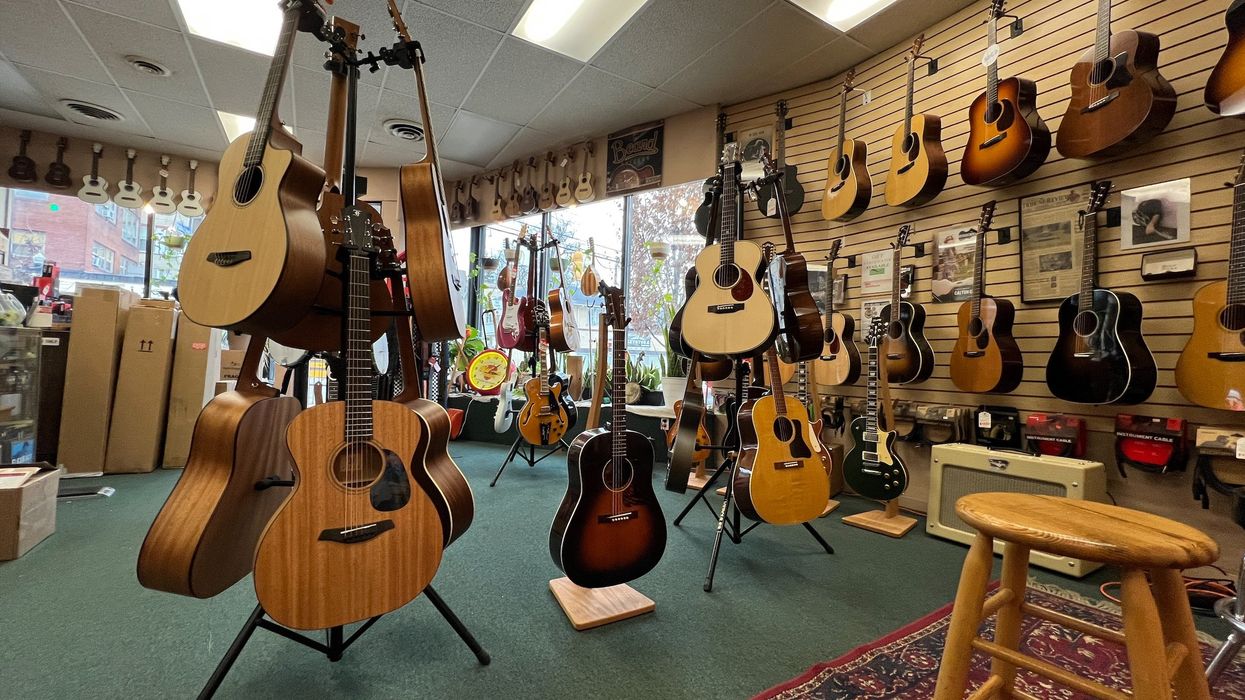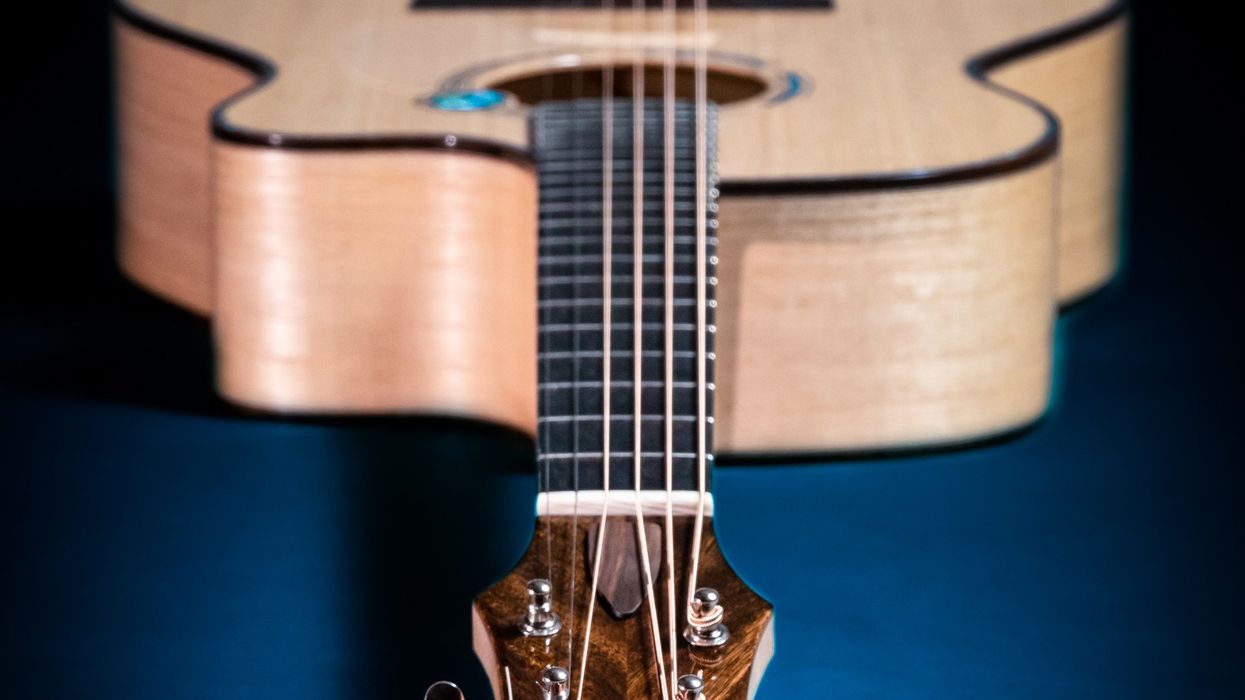One of the more frequent questions we get at Martin is about the difference between 12-fret and 14-fret acoustic guitars. Besides upper register access, what are the benefits and potential limitations? How does it impact design and tone? How should someone decide which option is right for them? To help answer these questions, I turned to Fred Greene, our vice president of product management at C. F. Martin & Co. Fred oversees the design and development of new products at Martin and has years of knowledge and experience in this area.
First, a quick history lesson. In the world of guitar luthiery, the 14-fret guitar—where the neck attaches to the body at the 14th fret—is a relative newcomer. When Martin started making acoustic guitars in 1833, they had 12 frets free of the body with a slotted headstock. At least part of the reason for this was that gut-string Spanish guitars, which were so influential in the development of the modern acoustic, had that same arrangement. Even nowadays when classical guitar builders regularly experiment with wood combinations and bracing patterns, they almost universally build guitars that have 12 frets.
By the early 1930s, guitars were popularly included in ensembles alongside woodwinds, brass, and banjos, which left many guitarists searching for ways to cut through the mix. In order to help those players carve out more sonic space, Martin started building 14-fret dreadnoughts in 1934. These guitars had a brighter and louder sound than their 12-fret counterparts, allowed for further access up the fretboard, and could hold their own against hard strumming while delivering single-note runs with clearer articulation and definition. Soon, the industry was rapidly making the transition to 14-fret models, and today they dominate the acoustic guitar landscape.
Because both 12- and 14-fret models have unique and desirable tonal qualities, it's not a surprise that many guitarists find both to be useful tools in their musical arsenal.
Structurally, changing a guitar from 12 to 14 frets may seem as simple as shortening the upper bout so the body meets the neck two frets higher, and Martin did exactly that with some models. Other designs included lengthening the neck by one fret and moving the soundhole closer to the bridge, as well as increasing the scale length to allow further variations on bridge and soundhole placement.
It's important to note that these changes are far from cosmetic. Each variation requires new bracing placement and results in unique tonal qualities.
So, which is better, a 12-fret or 14-fret guitar? The answer depends on what kind of music you play and the tone you want to achieve. Classical guitars continue to have 12 frets to the body in part because it places the bridge in the center of the lower bout, based on a traditional scale length of 25.6" (650 mm). This placement tends to maximize the ability of the top to vibrate, which can create that complex, almost pianistic tone that we associate with the classical greats. But strumming this kind of guitar can cause that rich tone to sound muddy and indistinct. Thus, fingerstyle players may find a 12-fret tone very satisfying, while a bluegrass artist or singer-songwriter may find it too subtle, bass-heavy, or unfocused when pushed. Beginners and smaller players may find that 12-fret guitars are easier and more comfortable to play, since their fretting hand doesn't have to extend quite as far to reach open position.
In the end, it comes down to tone, aesthetics, and what feels right for the player. Do you want greater access above the 12th fret? Are you playing primarily fingerstyle or with a pick? What do you find more comfortable to hold? Because both 12-fret and 14-fret models have unique and desirable tonal qualities, it's not a surprise that many guitarists find both to be useful tools in their musical arsenal. And while the 14-fret is the clear winner in terms of sales volume, there will always be a place for the time-tested 12-fret.
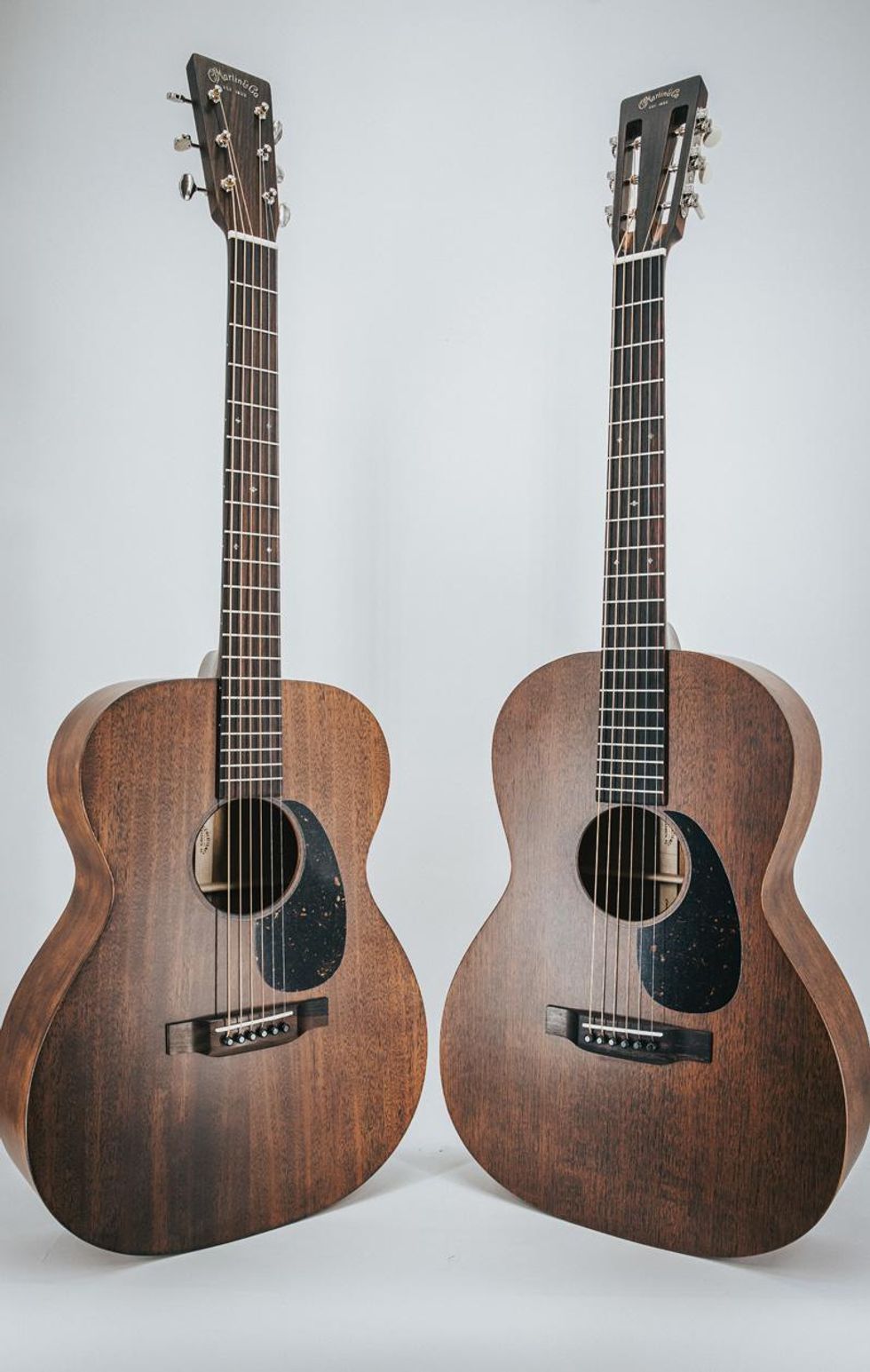
A 14-fret Martin 000-15M and its 12-fret counterpart, the 000-15.
When we are designing new guitars, we start with the player in mind. We try to draw a picture of the person we're trying to create this guitar for and understand what they want to do with it. Then, we work around that to decide if it will be 12-fret or 14-fret. It almost always comes out as a 14-fret, because they are so much more popular than the 12-fret in the current market.
But 12-fret guitars do still have plenty of fans. In fact, Fred Greene has a real soft spot for 12-fret guitars, and one of his favorite guitars in the Martin Museum is a 12-fret dreadnought. It is one of the most incredible sounding guitars in the whole collection. In his office, Fred keeps a Martin 00-28 VS, which is a 12-fret nylon that he just loves.
We were thinking differently about all this when we were designing the SC-13. We said, "Hey, you know, we want some of that clean, articulate voicing of a 14-fret, but we want to get the comfort of a 12-fret." We split the difference and we did a 13. It was the perfect compromise to get the playability and the sound together in one guitar. So, 12-fret vs. 14-fret? Perhaps the answer is 13 instead!
